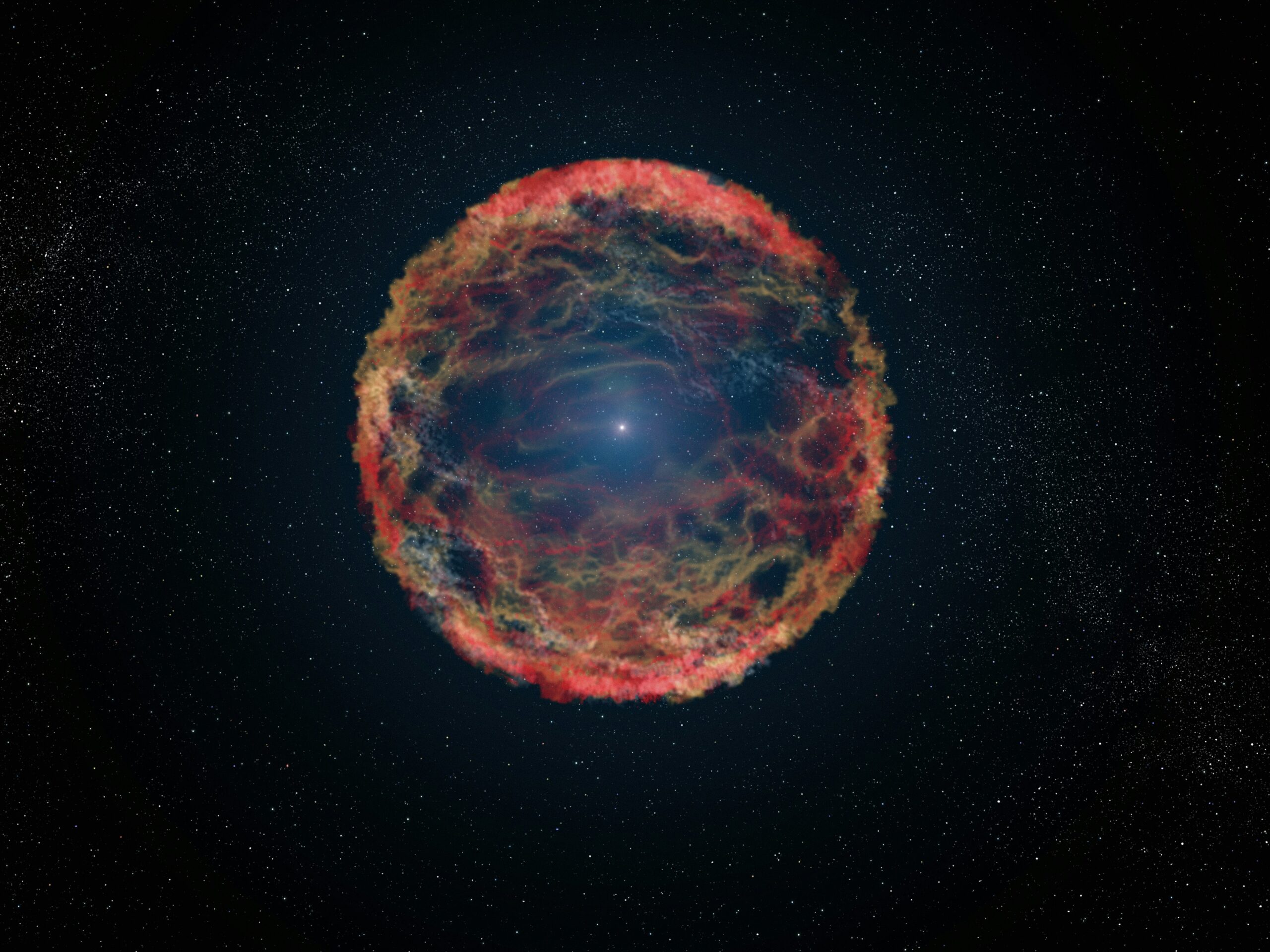An astronomer from the University of Hawaiʻi Mānoa has achieved a significant milestone in cosmic research by mapping the three-dimensional shape of a supernova at the moment of its explosive death. The supernova, designated SN 2024ggi, occurred in the nearby galaxy NGC 3621 and was observed during the critical shock breakout phase, revealing an unexpected olive-like configuration instead of a uniform sphere.
The discovery, published this week in the journal Science Advances, was made possible by rapid observations conducted within 24 hours of the explosion’s detection in April 2024. Chris Ashall, an assistant astronomer at the Institute for Astronomy at UH Mānoa, emphasized the rarity of such an event, noting that it might only occur once in a decade.
Coordinated Global Response
Upon the initial alert, the research team quickly mobilized to observe the supernova. Within 26 hours of the event, the Very Large Telescope (VLT) in Chile was directed to SN 2024ggi, according to the European Southern Observatory (ESO). Utilizing the FORS2 instrument, astronomers captured polarized light during the brief shock breakout phase, which lasted less than a day. These early measurements were crucial for determining the three-dimensional structure of the supernova.
The team analyzed the polarization of light across various wavelengths to reconstruct the geometry of the ejecta. Their findings indicated an axisymmetric, prolate shape resembling an olive, which flattened as it collided with surrounding gas while maintaining its orientation. This persistent axis suggests that large-scale processes could play a significant role in the explosion of massive stars.
Understanding the Progenitor Star
Further modeling and spectral analysis identified the progenitor star as a red supergiant with a mass approximately 12 to 15 times that of the Sun and a size around 500 solar radii. These characteristics are consistent with a typical Type II supernova and help clarify the short but intense shock breakout signal observed. The detailed geometry at breakout adds essential constraints for astrophysicists developing models of stellar explosions.
A follow-up campaign, which includes the James Webb Space Telescope, is currently monitoring the expanding debris from the supernova. Preliminary spectra from JWST reveal clumpy material where molecules are beginning to form, according to a recent paper published on arXiv. Researchers from UH Mānoa’s Institute for Astronomy are combining infrared and optical data to map the condensation of dust and molecules in the cooling ejecta.
The unique “olive” silhouette captured by this research underscores the importance of rapid alerts and flexible observational schedules in studying transient astronomical phenomena. The ESO highlighted the significance of this event, showcasing how local scientists can effectively collaborate in global campaigns to enhance our understanding of stellar death.
This groundbreaking observation not only provides a clearer picture of supernova dynamics but also demonstrates the collaborative effort required to study such fleeting cosmic events. As astronomers continue to analyze the data, they aim to deepen our knowledge of the life cycles of massive stars and the processes that govern their spectacular end.
